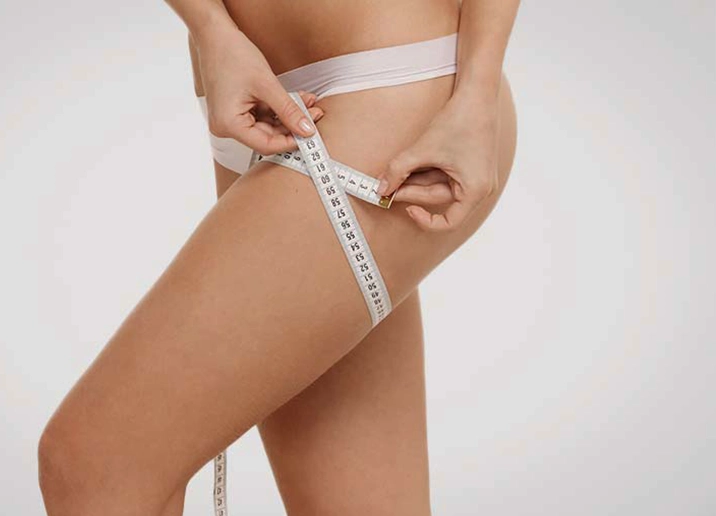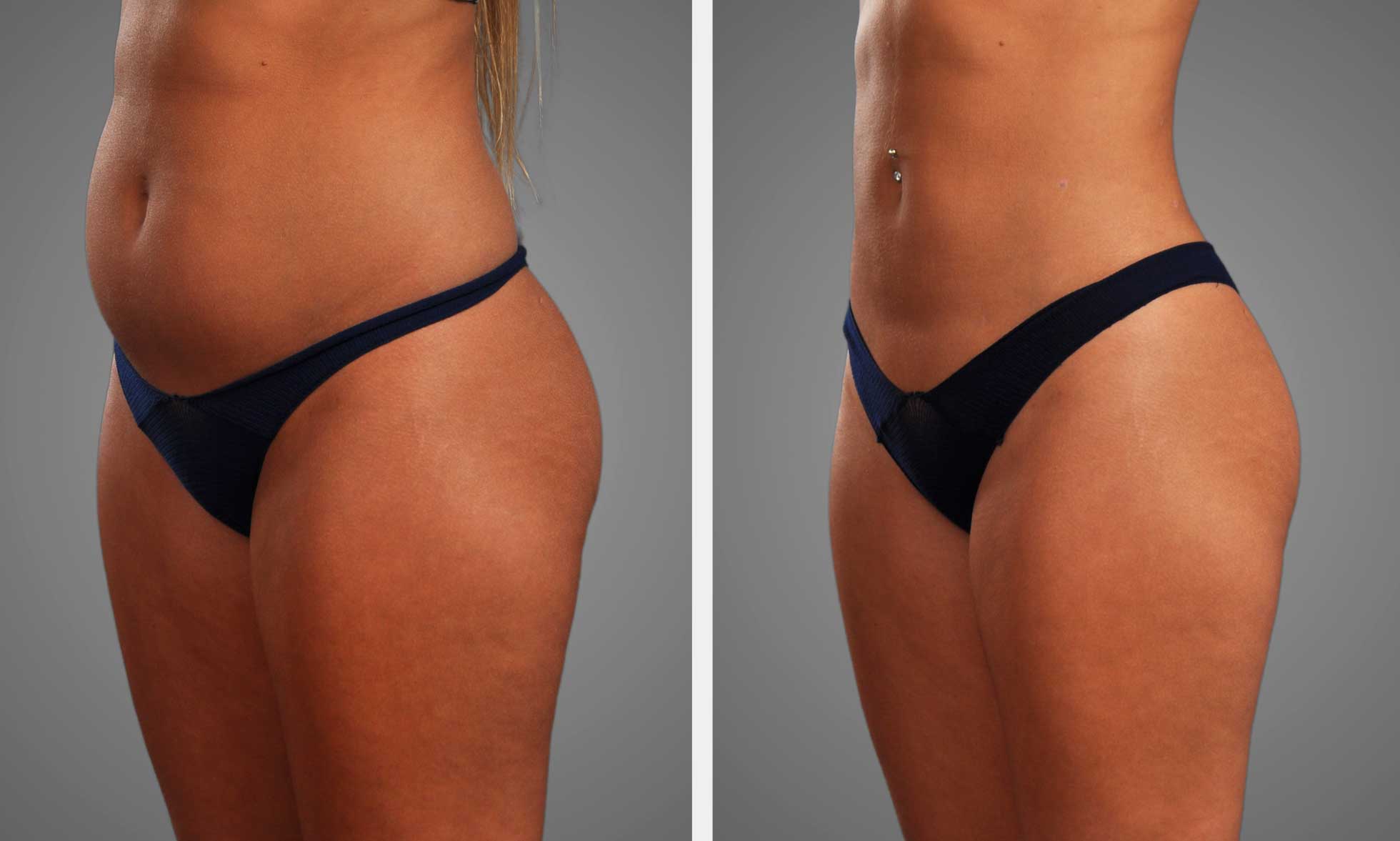Key Takeaways
-
VASER 4D liposuction is a precise method for sculpting the thighs, offering a more targeted approach than traditional liposuction by using ultrasound technology to break down fat cells.
-
The thigh sculpting procedure is minimally invasive, with VASER technology allowing for detailed contouring and shaping, resulting in a more natural and toned appearance.
-
Expected results from VASER liposuction on the thighs include significant improvements in shape and contour, with less downtime compared to traditional methods.
-
Recovery from VASER liposuction is generally quicker, with most patients able to resume normal activities within a few days, although full recovery and final results may take a few months to become fully visible.
-
Booking your consultation with a qualified and experienced surgeon is crucial to discuss your goals, understand the procedure, and ensure you are a suitable candidate for VASER liposuction.
-
By choosing VASER liposuction for the thighs, individuals can achieve a more aesthetically pleasing silhouette with less discomfort and downtime, making it an attractive option for those looking to enhance their body shape.
How VASER 4D Works
Ultrasound Technology
VASER 4D leverages ultrasound energy to break down fat cells. This technology targets fat precisely while preserving surrounding tissues. It emits sound waves that only fat cells can absorb, causing them to disintegrate.
Patients experience minimal discomfort during the process. The selective targeting ensures a smoother recovery compared to traditional methods.
Sculpting Precision
The procedure excels in contouring thighs, offering a natural look. Surgeons use VASER 4D’s precision to sculpt the area, enhancing the body’s natural curves. The outcome is not just slimmer thighs but also well-defined contours that complement the entire body.
This technique allows for detailed adjustments. It means results are tailored to each individual, ensuring satisfaction with their new appearance.
Local Anesthesia Benefits
VASER 4D often uses local anesthesia, improving patient comfort. This approach reduces risks associated with general anesthesia and shortens recovery time. Patients can return to daily activities sooner, with less pain and fewer complications.
The use of local anesthesia also allows patients to remain awake. They experience less anxiety and a quicker post-procedure recovery period.
Thigh Sculpting Procedure
Initial Consultation
The journey towards sculpted thighs begins with an initial consultation. Here, surgeons assess the patient’s legs and thighs, focusing on areas like the inner and outer thighs. They discuss goals, such as achieving a thigh gap or enhancing the contour of the thigh muscles.
Patients learn about the differences between VASER liposuction and traditional liposuction. The surgeon outlines how this minimally invasive procedure can target subdermal fat effectively.
Pre-Procedure Marking
Before surgery, precise markings guide the surgeon. They mark specific areas on the thighs, knees, and sometimes down to the ankles. This step is crucial for symmetry and achieving desired contours.
The VASER Procedure
During surgery, small incisions are made in discreet locations around the thighs. A saline solution mixed with anesthetics is infused to expand the fat layer. Then, VASER’s ultrasound technology liquefies fat cells while preserving surrounding tissues.
Surgeons use a cannula to remove liquefied fat gently. This process allows for detailed sculpting of the thigh area, targeting both deep and superficial layers of fat for a more defined appearance.
Post-Procedure Care
After surgery, patients wear a compression garment to reduce swelling and support healing skin. It also helps shape the legs according to the new contours created during liposuction.
Recovery varies but typically involves minimal downtime due to the procedure’s minimally invasive nature. Patients can soon enjoy their newly sculpted thighs, with results gradually improving as swelling subsides.

Expected Results
Immediate Effects
After undergoing vaser liposuction on the thighs, patients typically notice a significant improvement in the shape and contour of their legs. The technology behind this procedure allows for precise targeting of fat cells, which results in smoother and more toned-looking thighs.
Patients often experience some tightness and swelling in the treated areas. These side effects are temporary and gradually subside as the body heals. Despite these immediate post-procedure signs, the promise of sculpted thighs keeps patient satisfaction levels high.
Long-term Benefits
Over time, the advantages of vaser liposuction extend beyond initial fat reduction. One of the most notable long-term benefits is ongoing skin tightening. The ultrasound technology used in this procedure stimulates collagen production, leading to firmer skin around the thighs.
This process contributes to a more youthful appearance and further enhances body proportions. Patients enjoy reduced friction between their inner thighs, a common concern that leads many to seek thigh sculpting solutions.
Overall Impact
The overall impact of vaser liposuction on the thighs can be life-changing for many people. Beyond achieving a desired aesthetic look, it offers an improved sense of confidence and comfort. It’s important for patients to have realistic expectations and understand that results depend on multiple factors including exercise and diet habits post-procedure.
However, with proper care and maintenance, the sculpted silhouette achieved through vaser liposuction can last for years, making it a worthwhile investment for those seeking a permanent solution to stubborn thigh fat.
Recovery Journey
Quick Timeline
The recovery period after vaser liposuction on the thighs is notably swift. Most patients find themselves returning to daily activities within a week. Work can often be resumed in just a few days, especially if the job doesn’t require heavy lifting or prolonged standing.
This quick return is a significant advantage for those looking to minimize downtime. It’s crucial, however, to follow your surgeon’s advice closely during this time.
Compression Garment
Wearing a compression garment is a key step in the recovery process. It aids in reducing swelling and supports the body as it adjusts to its new contours. Typically, patients are advised to wear these garments for about four to six weeks post-treatment.
This practice not only promotes optimal healing but also helps shape the thighs more effectively, enhancing the results of the surgery.
Manageable Recovery
Compared to traditional liposuction methods, vaser liposuction offers a lighter and more manageable recovery period. Patients report minimal discomfort, which can usually be managed with over-the-counter pain relief.
This gentler experience reassures many that they can achieve their body goals without enduring severe pain or an extended recovery phase. It’s an essential factor for those concerned about the impact of surgery on their lifestyle and daily routines.
Booking Your Consultation
Initial Steps
After understanding the recovery journey, it’s crucial to start your path towards enhancing your thigh area. The first step involves scheduling an initial consultation. This meeting is key to discussing your cosmetic goals and assessing the suitability of VASER liposuction for your thighs.
Patients should reach out to clinics specializing in VASER 4D Hi-Def Lipo. A simple call can set this process in motion, connecting you with experts in body contouring.
Choosing Specialists
Selecting an experienced surgeon is paramount. Look for a professional skilled in using ultrasound technology for fat removal and sculpting. Their expertise ensures both optimal results and safety during the procedure.
A qualified specialist will also guide you through the process, addressing any concerns about incisions or the technology used.
Consultation Expectations
During your consultation, expect a thorough discussion about your medical history and aesthetic aspirations. The surgeon will examine your thigh area to tailor a treatment plan that meets your needs.
They will explain the procedure’s potential risks and benefits, ensuring you have all necessary information. This conversation is vital for setting realistic expectations and preparing for surgery.
Closing Thoughts
VASER 4D liposuction offers a cutting-edge solution for sculpting your thighs, blending innovative technology with artistic precision to achieve your desired silhouette. Through understanding how VASER 4D works, the specific procedure for thigh sculpting, what results to expect, the recovery journey, and how to book your consultation, you’re now equipped with key insights to make an informed decision. This method not only promises effective fat removal but also contours your thighs in a way that complements your body’s natural shape, ensuring results that go beyond traditional liposuction.
Choosing the right clinic and specialist is crucial for a successful outcome. Look for professionals who demonstrate expertise, experience, and a portfolio of satisfactory results. Your journey towards achieving the thighs you’ve always wanted starts with taking that first step: booking a consultation. Don’t wait any longer to transform your confidence and embrace a new you.
Frequently Asked Questions
How does VASER 4D Liposuction work for thigh sculpting?
VASER 4D Liposuction utilizes ultrasound technology to target and liquefy fat cells in the thighs, allowing for precise contouring and sculpting with minimal damage to surrounding tissues.
What can I expect from the thigh sculpting procedure?
Expect a tailored approach focused on reshaping and slimming your thighs, enhancing their natural contours. The procedure is minimally invasive, promoting quicker recovery times.
What are the expected results of VASER liposuction on thighs?
You can anticipate more defined and slimmer thighs, with results gradually improving over several months as swelling decreases. The outcome is long-lasting, provided you maintain a stable weight.
How long is the recovery journey after thigh VASER liposuction?
Recovery typically spans a few days to weeks, with most patients resuming light activities within days. Full recovery and final results may take up to 6 months.
What should I do to book my consultation for VASER liposuction?
Start by researching qualified surgeons specializing in VASER liposuction. Contact their office to schedule a consultation where you can discuss your goals, expectations, and any concerns regarding the procedure.

















































